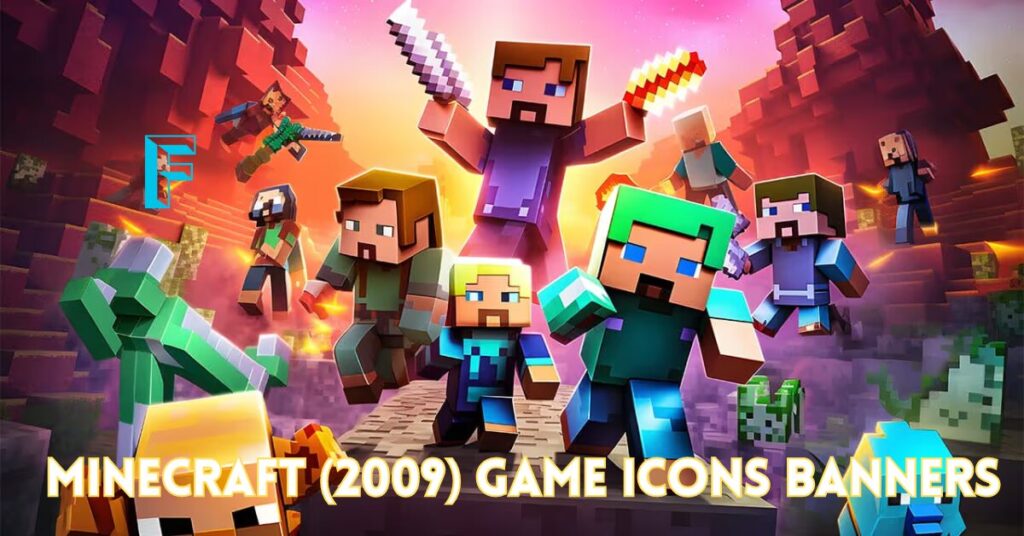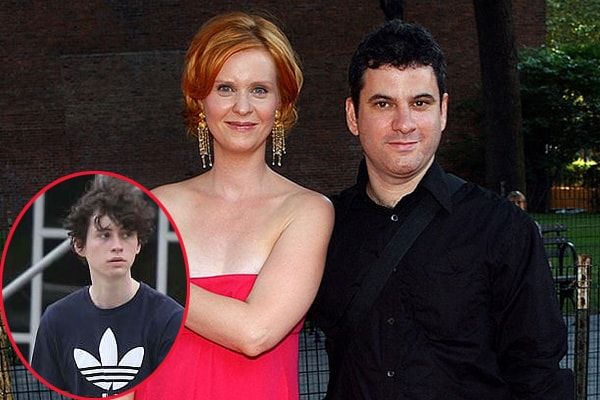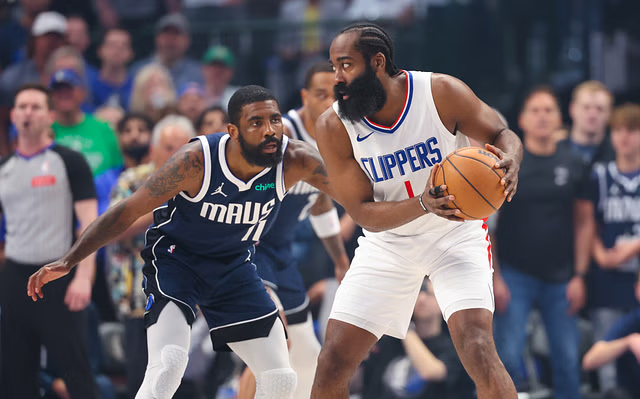Exploring Minecraft (2009) Game Icons and Banners
Minecraft, one of the most influential games of all time, made its debut in 2009 as an indie sandbox game developed by Markus Persson (also known as “Notch”). While it began with simple graphics and a limited scope, Minecraft rapidly grew to become a cultural phenomenon, beloved by players of all ages. Part of what makes Minecraft so iconic is its visual identity, crafted through memorable game icons, banners, and artwork that have evolved over the years.
In this article, we’ll explore the design of Minecraft (2009) Game Icons Banners since its initial release in 2009, looking at how these visuals have shaped the game’s identity and helped define its place in gaming history.
The Origins of Minecraft’s Visual Style
When Minecraft was first released in 2009, its graphics were intentionally simple, utilizing a pixelated, block-based aesthetic that set it apart from other games of the time. The minimalistic approach was partly due to limitations in resources and technology but ultimately became a signature feature of Minecraft’s style. Instead of using high-resolution textures or realistic graphics, Minecraft opted for a low-resolution, pixel-art look, which gave it a unique charm and laid the foundation for its iconic appearance.
Minecraft’s early icons and banners reflected this simplicity. In 2009, the game’s primary visual representations were pixelated and straightforward, often using bright, contrasting colors and clear shapes to stand out. These visuals weren’t just practical—they conveyed a sense of nostalgia and playfulness, reminiscent of classic arcade games. This simplicity in design became part of Minecraft’s DNA, influencing its visual elements, from game icons to banners and beyond.
Minecraft (2009) Game Icons: A Look at Early Designs
The initial game icon for Minecraft in 2009 was modest but effective. Typically, it was represented by a block of dirt with a layer of grass on top—a nod to one of the game’s core building blocks. This dirt-and-grass block icon became a symbol of the game, instantly recognizable and reflective of Minecraft’s core gameplay, where players could shape and build worlds using simple blocks.
This early dirt-and-grass icon was more than just a graphic; it was a representation of the player’s creative freedom within the game. By using an icon directly related to the game’s block-building mechanics, Minecraft’s visual identity highlighted what made the game unique. It showed that, unlike other games, Minecraft wasn’t about following a storyline or achieving set objectives. Instead, it was about creating and exploring—an idea perfectly captured in this simple yet meaningful icon.
As the game’s popularity grew, Mojang, the studio behind Minecraft, began refining the icon. While the fundamental design of the dirt-and-grass block remained, the colors and textures were updated to make the icon more visually appealing and polished. This approach allowed Minecraft to retain its nostalgic appeal while still giving the icon a more modern, professional look as the game reached a broader audience.

Evolution of Minecraft Game Icons: Adapting to Different Platforms
As Minecraft expanded to different platforms, its game icons underwent subtle changes to fit platform-specific design requirements. For instance, the PC version maintained the classic dirt-and-grass block, which became an essential part of the game’s identity. However, on mobile platforms and consoles, the icon was often modified slightly to suit the visual standards and requirements of app stores and console interfaces.
When Minecraft was released on Xbox 360 in 2012, Mojang updated the icon to align with the console’s branding style. This version of the icon featured slightly brighter colors and a polished, high-resolution look to meet the expectations of console players. Although these changes were subtle, they helped maintain consistency while adapting to different platforms, showcasing Minecraft’s flexibility as a game that could reach a wide array of players without losing its unique visual identity.
Today, the game icon remains largely faithful to its origins, continuing to represent the dirt-and-grass block, a symbol of the game’s humble beginnings and limitless potential. The icon has become so recognizable that it no longer requires any explanation or additional elements—it speaks for itself, embodying the essence of Minecraft’s creative freedom and exploration.
Minecraft Banners and Cover Art: Building a Visual Story
Alongside the game icons, Minecraft’s banners and cover art have played a crucial role in representing the game’s identity. In the early days, the banners were simple, often featuring pixelated landscapes or blocky terrain that highlighted the game’s sandbox nature. Just like the game icons, these banners used minimalistic colors and designs to reflect Minecraft’s aesthetic and emphasize the freedom of creation that the game offered.
One of the most iconic banners from Minecraft’s early days featured the classic dirt-and-grass block prominently, with other environmental blocks, like trees, mountains, and clouds, in the background. This visual was simple yet effective, communicating the game’s setting and open-world design. It showcased Minecraft as a world where players could create anything they imagined, a concept that resonated with its growing fan base.
As the game expanded and received updates, Mojang began incorporating more complex designs and characters into the banners, such as Steve (the game’s default character), Creepers, and other familiar creatures. These additions helped Minecraft’s visuals tell a richer story, hinting at the game’s survival aspects and various biomes. This evolution of banners mirrored the game’s development, with each new design element reflecting a feature or update that had been added to Minecraft.
Minecraft (2009) Banners for Marketing and Community Engagement
Minecraft (2009) Game Icons Banners have also played a critical role in marketing and community engagement. During special events or updates, Mojang often releases themed banners and visuals to celebrate and promote new features. For instance, when the Nether Update was released, the banners highlighted the new biomes, mobs, and resources within the Nether dimension, giving players a preview of what to expect.
Themed banners have also been used for major events, such as Minecon (Minecraft’s official annual convention), where unique visuals and icons are designed for each year’s event. These banners often reflect the specific theme of that year’s event and are eagerly anticipated by fans. Minecon banners have become collectible pieces of digital art within the Minecraft community, showcasing how important banners have become in representing the game and engaging its fan base.
Additionally, Mojang frequently collaborates with the Minecraft community by sharing fan-made banners or incorporating community-driven ideas into official designs. This approach not only fosters a sense of belonging within the Minecraft community but also keeps the game’s visuals fresh and varied, as they are influenced by the creativity of millions of players around the world.
How Minecraft’s Visual Elements Reflect Its Evolution
As Minecraft evolved from a simple indie game to a global phenomenon, its visual elements, including icons and banners, have grown along with it. The transition from basic graphics to more polished visuals mirrors Minecraft’s journey from a niche project to one of the best-selling games of all time. Despite this evolution, Mojang has carefully preserved the core elements of Minecraft’s design, ensuring that the visuals remain true to the original vision.
The dirt-and-grass block, for instance, has been a constant presence, representing Minecraft’s identity and humble beginnings. Each time a new update or feature is released, Mojang updates the visuals while keeping the fundamental aesthetic intact. This balance between innovation and nostalgia has allowed Minecraft to stay relevant over the years, appealing to both new players and longtime fans.
The Impact of Minecraft’s Iconic Visuals on Gaming Culture
The success of Minecraft’s visuals goes beyond just appealing to its player base; it has had a profound impact on gaming culture as a whole. The pixelated style of Minecraft’s icons, banners, and overall graphics has inspired countless other indie games, with many adopting similar blocky designs or minimalist styles. Games like Terraria, Roblox, and Stardew Valley have been influenced by Minecraft’s visual approach, proving that a game doesn’t need high-end graphics to capture players’ imaginations.
Additionally, the dirt-and-grass block icon has become a symbol of creativity and exploration within the gaming world. Its simplicity allows players of all ages to connect with the game, as it symbolizes both the early days of Minecraft and the infinite possibilities that lie within its block-based worlds. In the broader context of gaming culture, Minecraft’s visuals represent a shift toward player-driven content, where the creativity and choices of the players shape the game world as much as the developers’ designs do.
Conclusion
Since its release in Minecraft (2009) Game Icons Banners have become an integral part of its legacy, embodying the game’s core values of creativity, exploration, and endless potential. From the humble dirt-and-grass block icon to the elaborate banners that celebrate updates and community events, these visuals have played a crucial role in shaping Minecraft’s identity and establishing its place in gaming history.
The simplicity and nostalgia of Minecraft’s visual elements continue to attract new players while resonating with longtime fans. By preserving the core aspects of its aesthetic while adapting to new platforms and updates, Minecraft has created a visual identity that’s both timeless and universally recognized. In the years to come, Minecraft’s game icons and banners will remain symbols of a game that has not only entertained millions but also inspired creativity, imagination, and a love for digital exploration.




